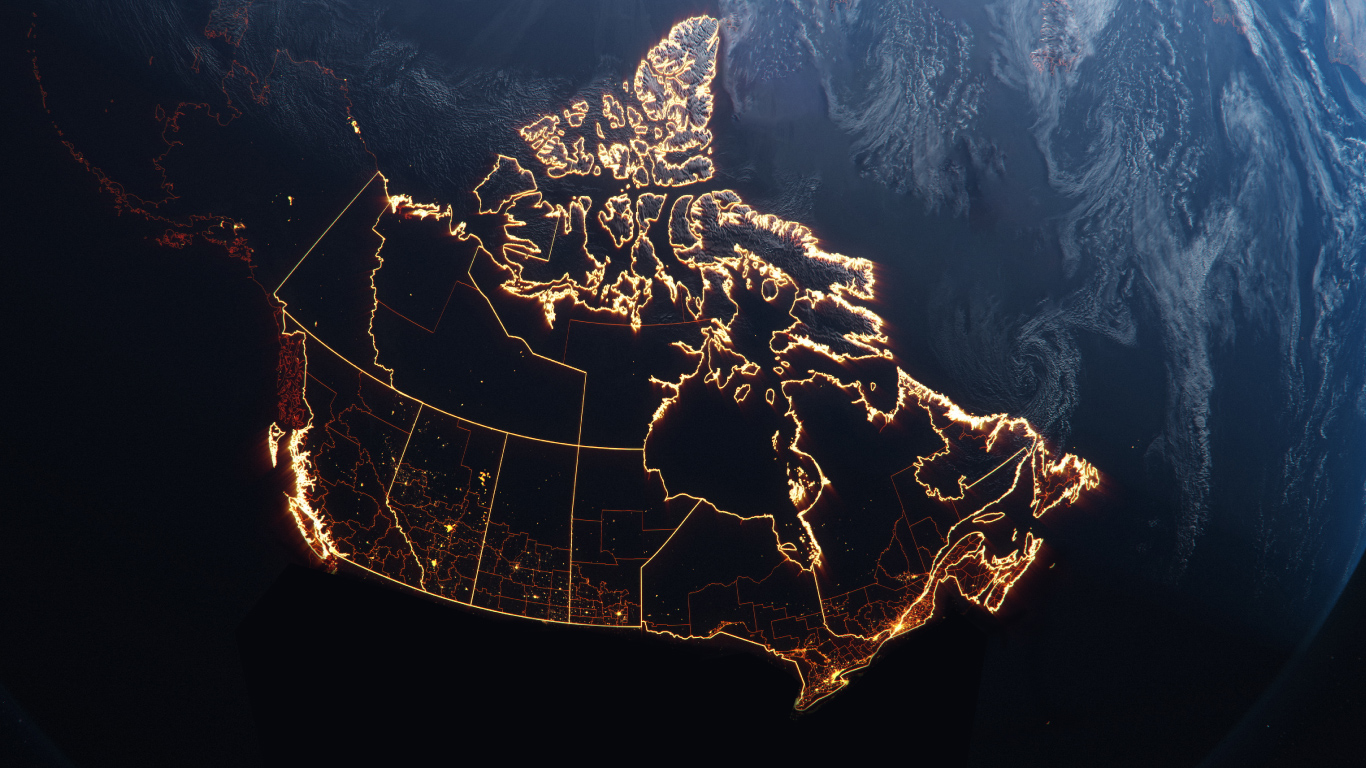
You have a good chance of seeing the Northern Lights when flying over northern Canada on a clear winter night. If you look down, you will also see a light display of remote communities, not nearly as brilliant, but equally fascinating.
If you’ve ever wondered who lives among those remote specks of light in the snow and ice, wonder no more. Data from the 2021 Census of Population provides a snapshot of the populations in these remote communities, including how many people live there, the language(s) they speak, their average age and income, level of education and a host of other variables.
The following is a profile of two of Canada’s larger remote northern communities. You might be surprised to learn that there are more people working in arts, entertainment and recreation in these two “remote” outposts than there are working in agriculture, forestry, fishing and hunting.
Chibougamau, Quebec
About 90 minutes into an overnight flight from Toronto to London will find you flying over the mostly empty Laurentian Shield of Central Quebec. If you look down, among the last specks of light you will see in Quebec—and certainly the brightest in the remote North—is the town of Chibougamau.
Chibougamau was home to 7,504 people in 2021, 271 fewer compared with five years earlier. The town is predominately French speaking.
Just under two-thirds (65.6%) of the residents of Chibougamau were aged 15 to 64 years in 2021, with children (18.5%) outnumbering seniors (15.9%). The average age in Chibougamau was 40.5 years.
In Quebec overall, there were more seniors (20.6%) than children (16.4%), and the average age was 42.8 years in 2021.
Almost three in five adults in Chibougamau (3,410 people) had a postsecondary education, with 1,395 having an apprenticeship, trades certificate or diploma, 1,090 having a CEGEP, college degree or diploma and 725 having a university degree or higher.
Three in five residents of Chibougamau aged 15 years and older worked in 2020, earning on average $51,400 a year, over $5,000 more than the provincial average of $46,240.
Overall, 1 in 10 adults in Chibougamau earned over $100,000 a year in annual income.
Just under one in five of the 4,015 working residents of Chibougamau were employed in the health care and social assistance (755 jobs) in 2021. Manufacturing (650 jobs) was the next larger employer, followed by retail trade (470), public administration (275) and education (255).
Almost 1 in 10 (9.1%) residents of Chibougamau were living below the low-income after-tax threshold in 2020. Low income was most prevalent among seniors (20.6%) and rarest among children (6.7%). Less than 1 in 10 residents (590 people) of Chibougamau reported an Indigenous identity in 2021, including 350 First Nations people and 170 Métis.
Given that Chibougamau is a scenic six-hour drive from Québec and eight hours from Montréal, one might assume it is among the most remote places in Canada. In fact, Chibougamau is deemed “more” rather than “most” remote.
Flin Flon, Manitoba
About two hours into a night flight from Montréal to Edmonton will find you north of Lake Winnipeg, over the boreal forest of northern Manitoba. The largest cluster of lights you will see below is the town of Flin Flon, perhaps best known as the birthplace of hockey legend Bobby Clarke.
Flin Flon, where English is the predominantly spoken language, was home to 4,940 people in 2021, 51 fewer compared with five years earlier.
Almost two-thirds (63.9%) of residents of Flin Flon were aged 15 to 64 years in 2021, with seniors (18.8%) outnumbering children (17.4%). The average age in Flin Flon was 42.2 years.
In Manitoba overall, there were more children (18.8%) than seniors (17.1%), and the average age was 39.7 years in 2021.
Almost half of adults of Flin Flon (1,805 people) had a postsecondary education, with 840 having a college degree or diploma, 510 having a university degree or higher and 370 having an apprenticeship, trades certificate or diploma.
Just under three in five residents of Flin Flon aged 15 years and older worked in 2020, earning on average $53,200 a year, $7,800 more than the provincial average of $45,400.
More than 1 in 10 adults in Flin Flon earned over $100,000 a year in annual income.
Approximately one in four (585 people) of the 2,465 working residents of Flin Flon were employed by a mining company in 2021. Health care and social assistance was the next larger employer (450 jobs), followed by retail trade (350), education (200) and accommodation and food services (150).
Over 1 in 10 (11.7%) residents of Flin Flon were living below the low-income after-tax threshold in 2020. Low income was more prevalent among children (15.8%) than seniors (10.8%).
Approximately 1,090 residents of Flin Flon reported an Indigenous identity in 2021, including 595 Métis and 475 First Nations people.
Flin Flon is deemed among the “most” remote municipalities in Canada.
Approximately one in nine Canadians live in a community deemed ‘moderately’, ‘more’ or ‘most’ remote.
At Statistics Canada, we quantify the level of remoteness for every one of the 5,123 municipalities in Canada.
Almost two-thirds of municipalities were classified as ‘moderately remote’, ‘more remote’ or ‘most remote’ in 2021. While approximately one in nine Canadians lived in these remote municipalities in 2021, these regions accounted for about three-quarters (74.6%) of the Canadian landmass. An additional 19.3% of Canada’s landmass is unoccupied.
Contact information
For more information, contact the Statistical Information Service (toll-free 1-800-263-1136; 514-283-8300; infostats@statcan.gc.ca) or Media Relations (statcan.mediahotline-ligneinfomedias.statcan@statcan.gc.ca).
